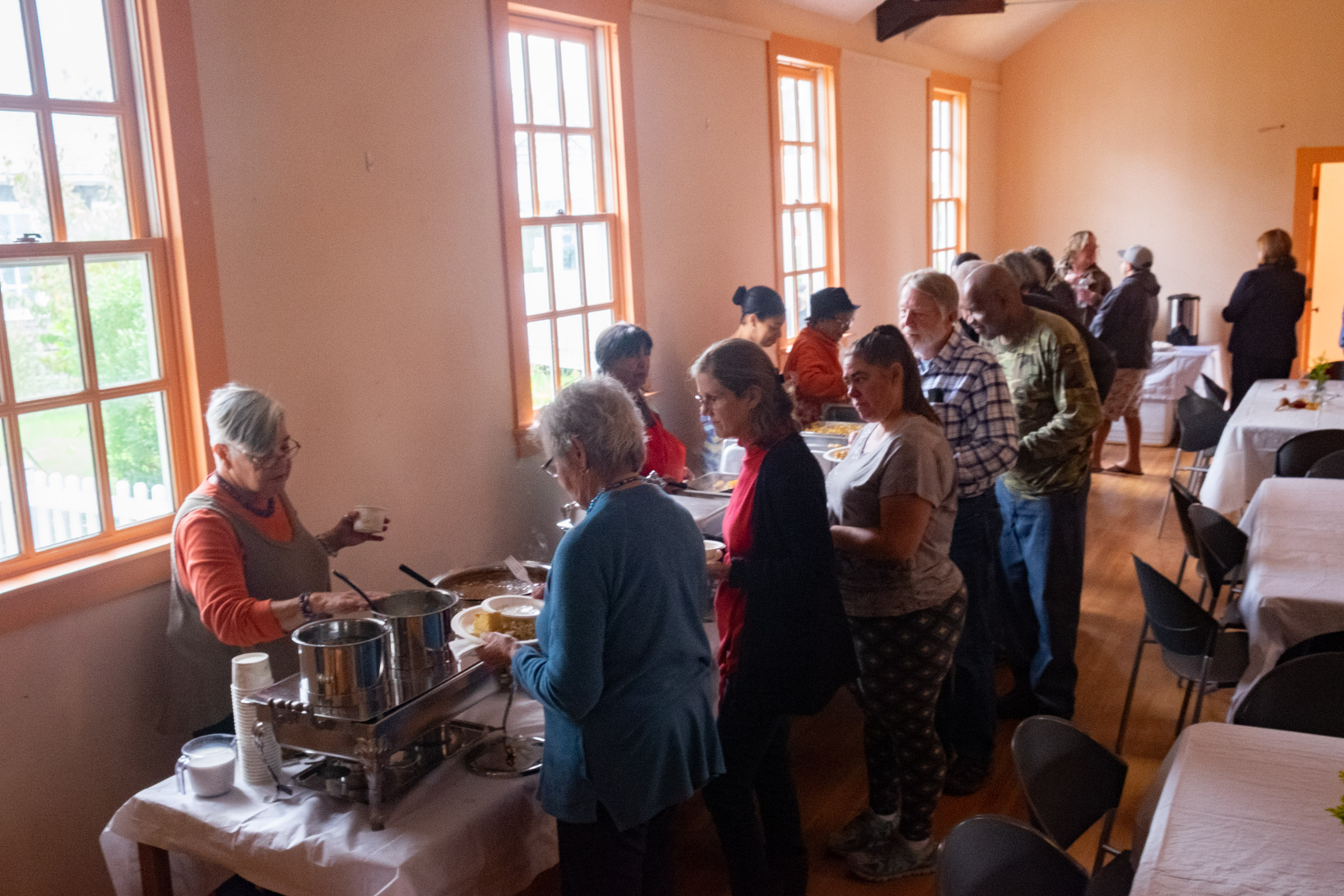The Community Baptist Church of Gay Head, the longest continually worshipping Native American congregation in the United States, celebrated its 325th anniversary on this past weekend.
For the past 325 years, the church has served as a pillar of the Wampanoag community in Aquinnah. Founded in 1693 off Old South Road, the simple white building has survived hurricanes, erosion, and most impressively, centuries of Aquinnah town meetings. In its early years, white settlers who arrived on the shores of the Gay Head Cliffs used the church as a vehicle for Native American cultural assimilation.
Although the congregation has declined over the years and the parsonage has fallen into disrepair, about 50 enthusiastic parishioners gathered on Saturday to eat quahog chowder, listen and dance with the Black Brook Singers, tell stories, and honor the three-century long tradition of the little church on the cliffs.
“Everyone who comes there says something about this place is different,” said Aquinnah Wampanoag Chief Ryan Malonson. “And I don’t know what that is, but I think it’s the legacy.”
Things got off to a slow start on Saturday when innkeeper, avid church-goer and Texas transplant Melissa St. John went to the cliffs and found some weather damage.
“We were a bit delayed because the wind blew the tent down last night so we had to decide whether we were going to move it,” she said. “And just to make things clear, the Lord decided to blow down the port-a-potty too.”
Eventually the festivities were moved indoors to the Aquinnah town hall, safe from the wind and rain.
“The Lord works in strange and mysterious ways,” Ms. St. John added. “God may let you bend but he won’t let you break.”
On Sunday, Ms. St. John rang the church bell 325 times. According to lore, it was the first time the bell was heard since the hostages were released from Iran.
As the celebration got underway, members of the Wampanoag community gathered to eat Kristina Hook’s home-cooked fare. She created a three sisters dish with corns, beans, squash, and rice for good measure, as well as venison stew, lima bean soup, and quahaug chowder. Ms. Hook grew up in the church, even though she had a roundabout way of getting there.
“My story’s a special one,” Ms. Hook said. “My father was a Russian Jew, my mother was Aquinnah Wampanoag. There were racial connotations with that. When the war started, my grandmother Betty Belain Ryan baptized all the kids in the Wampanoag church to make sure whatever happened they weren’t going to hell.”
Ms. Hook spent her childhood going to the Community Baptist Church, where after Sunday school she would toddle over and always sit in the back row.
“There was no cards, no alcohol, and no swearing...until I grew up,” she confessed. “When I moved home 20 years ago I didn’t see the church as a bible part of my life, but standing in front of all you people, it might be time.”
Bettina (Malonson) Washington talked about the piousness of the churchgoers.
“The Island supplied the most ministers and medicine people on the Cape,” she said. “Everyone was responsible for their own spirituality. The issue wasn’t really Christianity. The problem then, as it is now, are people who say they are Christian but do not practice the Christian creed. This church taught me that if someone does not agree with you, you don’t beat them into the ground. You brush it off and talk about it.”
Communion at the Community Baptist Church is done with cranberry juice, a symbol of fellowship for the Aquinnah Wampanoag. Tribe members had gathered cranberries for non-Wampanoags so that everyone who attended could take a little piece of Aquinnah with them when they left.
Tribal Chief Ryan Malonson told the crowd how the church’s raucous songs reminded the Island of their fellowship and community.
“One thing we were always known for when we got together was that we got it rocking” he said. “Open up every window in the house, whatever the weather was, and sing.”
In that same tradition, the Black Brook Singers, comprised of Chris Belain, Carole Vandal, Chip Vanderhoop, Durwood Vanderhoop, and his six-year-old son William, had the town hall rocking this Saturday with round dances, friendship dances, and more. The drum represents a deep Wampanoag history.
“I was born here, I grew up in the church, and left in ‘81 to go over to America,” Mr. Malonson said. “I got in trouble, found out a lot of things, learned a lot, but whenever I could I would try to make it home to attend church services.”
He continued, with a few tears:
“It’s pretty amazing when you sit down and look at our history and it says 1693, because there was so much work that was done before then,” Mr. Malonson said. “All these people have come through to make this sure this church is still here. We’re older than this country is...you ask us when we got here. We’ve always been here.”











Comments (1)
Comments
Comment policy »